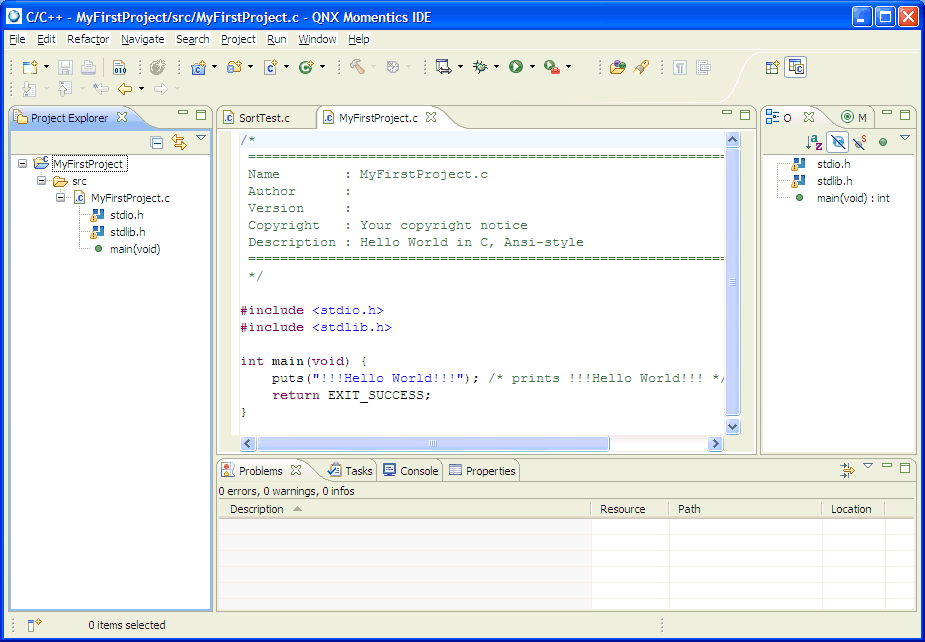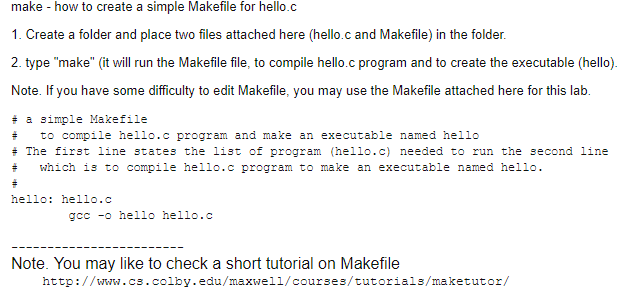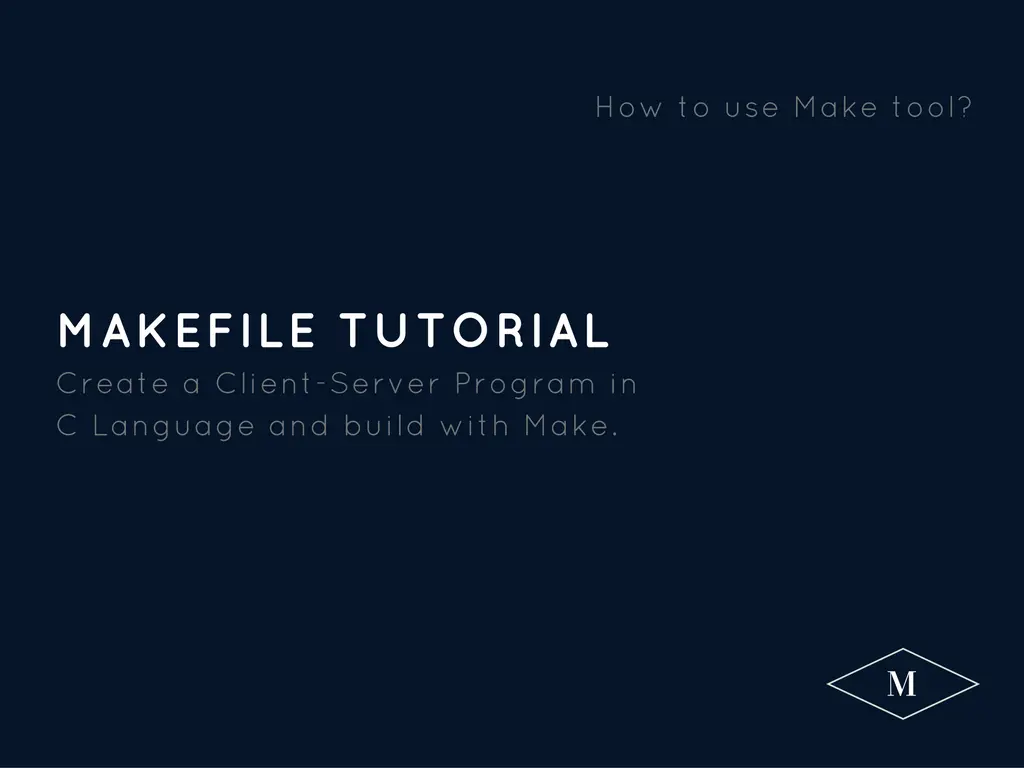


- #Write simple makefile for c program how to
- #Write simple makefile for c program code
- #Write simple makefile for c program professional
- #Write simple makefile for c program windows
The preprocessor makes any requested modifications to your source code before passing it to the compiler. The first two lines of actual code are: #include Īny line that starts with a # character is called a ‘preprocessor directive’. What’s included at the top of a cpp file varies widely between companies and also depends on personal preference, but bear in mind that the point of the comments is to tell the next person that comes along a little bit about what this file contains.

They were created for you by Eclipse and you can edit these to your heart’s content. Let’s just run through the contents of the Hello.cpp file, so you have an idea of what you have created. Figure 3: Console output That’s great, but what does it all mean? Even if you close the window, it will reappear next time you run the program. Note that if you prefer a pop-up console window, you can right click and select the ‘Detached’ option on the console tab. You should see “!!!Hello World!!!” in the console area at the bottom of the screen (Figure 3). If this happens, select Build (the hammer icon) before trying to Run. Note: Eclipse may be set to NOT build automatically, in which case you will get an error about the binary not being found. Now all you have to do is hit ‘Run’ (it’s that little green button that looks like a play symbol). Figure 2: Your Hello World Project Your project in action If you expand the project folder on the left, and then expand the ‘src’ folder underneath it, you will see the location of your program file, Hello.cpp (Figure 2). You should now be able to see your ‘Hello’ project on the left hand side of the screen, and the contents of the Hello.cpp file in the main window. Click Finish.Įclipse will create your project and project file and return you to the main C++ view. Click next and again accept all the defaults in the Select Configurations window. Figure 1: Create a Hello World C++ ProjectĬlick next and accept all the defaults in the Basic Settings window. Name it Hello, and select the project type as Hello World C++ Project (Figure 1).
#Write simple makefile for c program windows
This opens the C++ ‘perspective’ in Eclipse, which is a fancy way of saying it makes available the windows and options you need to develop C++ programs. Window > Open Perspective > Other > C/C++ Open eclipse (you’ll find it in the Applications > Programming menu), and if this is the first time you have used it, accept the default workspace and close the welcome window.
#Write simple makefile for c program how to
There’s a wealth of information on the Eclipse website that tells you how to install Eclipse for your operating system, but the heads up if you’re a Fedora user is just switch to root (or use sudo) and run: yum install eclipse-cdt Create your project I program on Fedora Linux, not Windows, so although your screenshots may differ slightly to mine, Eclipse runs quite happily on both. Why? Because in the majority of my other C++ tutorials I will be using Eclipse as the IDE (integrated development environment), and building on a basic project such as this. This is a tutorial on creating and understanding a ‘Hello World’ program in C++ using Eclipse.
#Write simple makefile for c program professional
G77 -lc -o fprogram fprogram.o ffunction.o cppfunction2.o Informationįor more information, see this make tutorial from the University of Hawaii.It’s a series of professional video and text tutorials on using C++ and Eclipse CDT. No other files should be touch fprogram.f make `fprogram' is up to we make changes to the source code in fprogram.f andĬppfunction2.C, make should automatically recompile the affected object files, and relink the final executable. G77 -lc -o fprogram fprogram.o ffunction.o cppfunction2.o we make no changes to any of the files and rerun make, This first time through, none of the object files exist at all, and so all the source code files are make Similarly, any object files newer than the final executable will cause the executable to be relinked. Example Compilation with Above MakefileĮach time we run make, any source code files newer than their corresponding object files will be recompiled. Also ensure that there is an extra blank line at the end of the Makefile. Make absolutely certain you prefix each command line (the gcc, g77, or similar lines) with a TAB character, not spaces. In this case, C, C++, and FORTRAN source code is compiled into object files. SUFFIXES: line gives a list of file extensions that will be used in the final compilation. OBJECTS=fprogram.o ffunction.o cppfunction2.o cfunction2.o The following lines are entered into a normal Example Makefile to Build Mixed FORTRAN, C, and C++ program


 0 kommentar(er)
0 kommentar(er)
